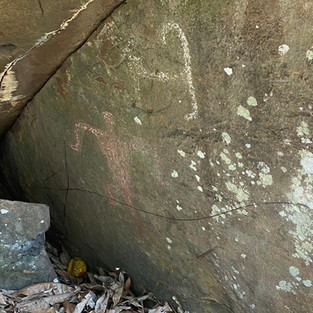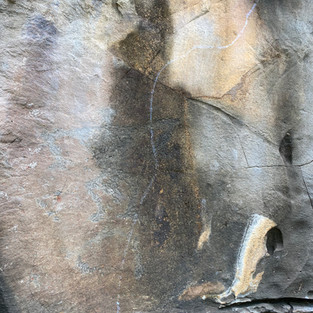Nu'uanu Petroglyphs
- kanakaclimbers
- Feb 15, 2022
- 3 min read
Concerning access issues to Nu’uanu, archeologists are concerned about the petroglyphs on two of the boulders. Our goal is not to lose access to the area. It is to create more responsible climbing.

Concerns to Town Boulders
Concerning access issues to Nu’uanu, archeologists are concerned about the petroglyphs on two of the boulders. The cemetery is worried about the large groups of hikers and climbers playing loud music, clapping or yelling coming from the valley. The sound is carrying into the funeral pavilion area during funerals and throughout the public’s times of mourning. We have consulted some of the more experienced climbers and other Native Hawaiian groups on the island and they are in agreement with us. We have also spoken with Native Tribes from the mainland about similar issues they have faced. Our goal is not to lose access to the area. It is to create more responsible climbing.
Nu’uanu Petroglyphs
Native Hawaiians have a deep-rooted connection to that land. For Natives, we see the mountains, boulders, plants, and animals as our ancestors. We believe certain places can hold generations of Mana, which is a divinely powerful or spiritual presence. The small spaces that are still truly Hawaiian in the middle of this “state” are very rare. The majority of our Hawaiian spaces have been cultivated for the tourist’s enjoyment or financial gain. Nu’uanu petroglyphs are one of the spots that don’t need to be changed for the tourist’s pleasure. It is what is, it’s been there for centuries, and all we can do, when we are there is reflect on the rich history that lies within Nu’uanu Valley.
History of Nu'uanu
Here is a simple break down of some of the known verbal and written history of Nu’uanu. The Pali highway was used as the superhighway connection Waikiki to Kaneohe because it is one of the lowest valleys within the Ko’olau Mountain range. Carbon dated materials have traced the first island inhabitants to between 124 AD to 160 AD. This is where the petroglyph legend comes into play. While crossing through the Pali mountain trail if you saw a large black spirit dog it was said to be an omen of death and that you wouldn’t make it through the steep sheer cliffs. That spirit dog's name was Kaupe and he made his home near Kapena Falls. Also, another mo’olelo (story) associated with Kaupe was that he is a Demi-God, half man and half dog with a large body of a man with the head and claws of a black dog. It is said he would kill anyone that crossed his path other than Aliʻi (royalty). That is important to the region because from that mo’olelo the Aliʻi decided it was a good place to lay to rest the Iwi Kupuna (ancestral remains). Which is why directly above the valley is the Hawaiian Royal Mausoleum. Iwi or bones hold the spirit of the Hawaiian, the mana, the divine power. The Iwi Kupnua stay connected to the areas and continue to guide Hawaiians physically and spiritually through the land in which they are buried.
Historically climbing was a common practice for Hawaiians. Whether they were moving through the sheer mountain cliffs or up and down the sea cliffs to access fishing areas. Along with burial caves being found on every Hawaiian Island. Inside the burial caves, they have found remains of stretchers, canoes, ropes, and torches. Indicating that our ancestors used the ropes for rigging the large canoes up and down the sea cliffs and mountainsides. Whether or not they used the rope or free climbed the areas is unknown. But for a Native Hawaiian being able to project and climb in an area such as Nu’uanu is a great honor. An honor and a gift that we want to save for our Native Hawaiian Keiki.
The STATE PARKS has closed the routes on the Warm-Up Boulder and Roots/Banyan Boulder to protect the petroglyphs.
This is not an effort to ‘gatekeep’ or limit climbing access to the community, but an opportunity to educate and preserve ancient Hawaiian history. The climbing community has long been centered around environmentalism and conservation, and that is exactly the attitude that will help this issue gain the traction necessary to hopefully have a positive influence on the culture here.
*Access concerns: Every climbing location in Hawai’i is access sensitive. Please do not post directions or geotag photos. This website does not give you permission to access any lands, either public or private. Climb and enter at your own risk, remember YOU represent the entire climbing community. If a member of the general public or state agents asks you to leave, it is best to go.




















Comments